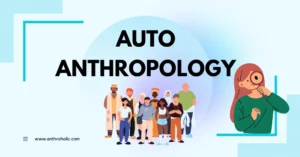AI Answer Evaluation Platform Live Now. Try Free Answer Evaluation Now
Gender Issues
Gender issues are among the most debated topics in today’s world. From education and employment to politics and health, gender inequality continues to shape the opportunities and challenges faced by individuals. Although progress has been made in recent decades, the persistence of discrimination, stereotypes, and unequal access to resources shows that the journey toward true gender equality is far from over.

The conversation around gender has also grown more complex in recent years. It is no longer limited to the traditional binary of men and women but extends to the rights of transgender, non-binary, and gender-nonconforming individuals. Issues such as workplace harassment, the gender pay gap, unequal representation in leadership, and lack of access to reproductive rights highlight how systemic barriers continue to disadvantage large sections of society.
What Are Gender Issues?
Gender issues are problems that come up when people are treated unfairly just because of their gender. Think about situations where girls don’t get the same chance to go to school as boys, or when women are paid less than men for doing the same job. It also shows up in subtle ways like when men are told not to cry because “it’s not manly,” or when people who don’t fit into traditional male or female roles face judgment and exclusion.
At their core, gender issues are about barriers that stop people from living freely and equally. They affect everyone, but historically women, transgender, and non-binary people have faced the biggest disadvantages. Recognizing these issues helps us see that gender equality isn’t just about women’s rightsit’s about making sure every individual, no matter their gender, has the same respect, opportunities, and choices in life.
Major Gender Issues in Society
1. Gender Inequality in Education
- Millions of girls worldwide are still denied the right to education due to poverty, child marriage, or cultural restrictions.
- Gender-biased curricula often portray women in traditional caregiving roles while men are shown as leaders, reinforcing stereotypes.
2. Workplace Discrimination and Pay Gap
- Women earn on average 20-30% less than men for similar work.
- They face a “glass ceiling” that limits career advancement.
- Unpaid care work, mostly done by women, is undervalued and unrecognized in economies.
3. Health and Reproductive Rights
- Inadequate maternal healthcare leads to preventable deaths.
- Restrictions on reproductive rights deny women autonomy over their bodies.
- Gender-based violence severely impacts physical and mental health.
4. Underrepresentation in Politics and Leadership
- Globally, women hold only around 26% of parliamentary seats.
- Decision-making spaces are still dominated by men, affecting policy priorities.
5. Gender Roles and Stereotypes
- Women are often expected to manage domestic responsibilities, while men are pressured to suppress emotions.
- Media and advertising continue to reinforce traditional gender roles.
6. LGBTQ+ and Intersectional Challenges
- Transgender and non-binary individuals face lack of legal recognition, workplace discrimination, and social stigma.
- Gender issues intersect with caste, class, race, and ethnicity, creating multiple layers of inequalit
Why Gender Equality Matters
Gender equality isn’t just a “women’s issue”, it’s a human issue that affects everyone. When half of the population is held back, society as a whole loses out. Here’s why it’s so important:
- Fairness and Human Rights: Every person deserves the same opportunities, respect, and dignity, regardless of gender. Gender equality is simply about ensuring basic human rights for all.
- Better Economies: Studies show that when women and men have equal access to work and resources, economies grow faster. Countries that close the gender gap see higher productivity and innovation.
- Healthier Families and Communities: Equality at home leads to better decision-making, healthier children, and stronger families. Shared responsibilities reduce stress and improve overall well-being.
- Diverse Leadership: When women and men share leadership roles, policies and workplaces become more inclusive and effective. Different perspectives bring better solutions to social and global challenges.
- Breaking Stereotypes for All: Gender equality also frees men from rigid roles, allowing them to express emotions, take part in caregiving, and live more balanced lives.
In simple terms, gender equality means unlocking the full potential of people, families, and societies. It’s not just the right thing to do — it’s the smart thing to do.
Solutions to Gender Issues
Education Reform
- Provide scholarships and safe schooling environments for girls.
- Introduce gender-sensitive teaching that breaks stereotypes.
- Encourage STEM education for women and girls.
Workplace Policies
- Enforce equal pay for equal work.
- Implement maternity and paternity leave policies.
- Promote women into leadership positions through quotas and mentorship programs.
Political Participation
- Strengthen gender quotas in parliaments and local bodies.
- Support women candidates with funding, training, and safety measures.
Legal Protection and Enforcement
- Enforce strict laws against gender-based violence and workplace harassment.
- Establish fast-track courts and victim support systems.
Awareness and Social Change
- Launch campaigns to challenge stereotypes in media and society.
- Encourage men to share domestic and caregiving responsibilities.
- Use an intersectional approach to address issues faced by marginalized communities (Dalit women, LGBTQ+, etc.).
Recent Developments
- The #MeToo Movement highlighted the global scale of workplace harassment.
- Several countries have adopted gender-neutral laws and parental leave policies.
- Women leaders have risen to the forefront in politics, business, and science, breaking long-standing barriers.
- UN Sustainable Development Goal 5 emphasizes gender equality as a critical driver of sustainable development.




